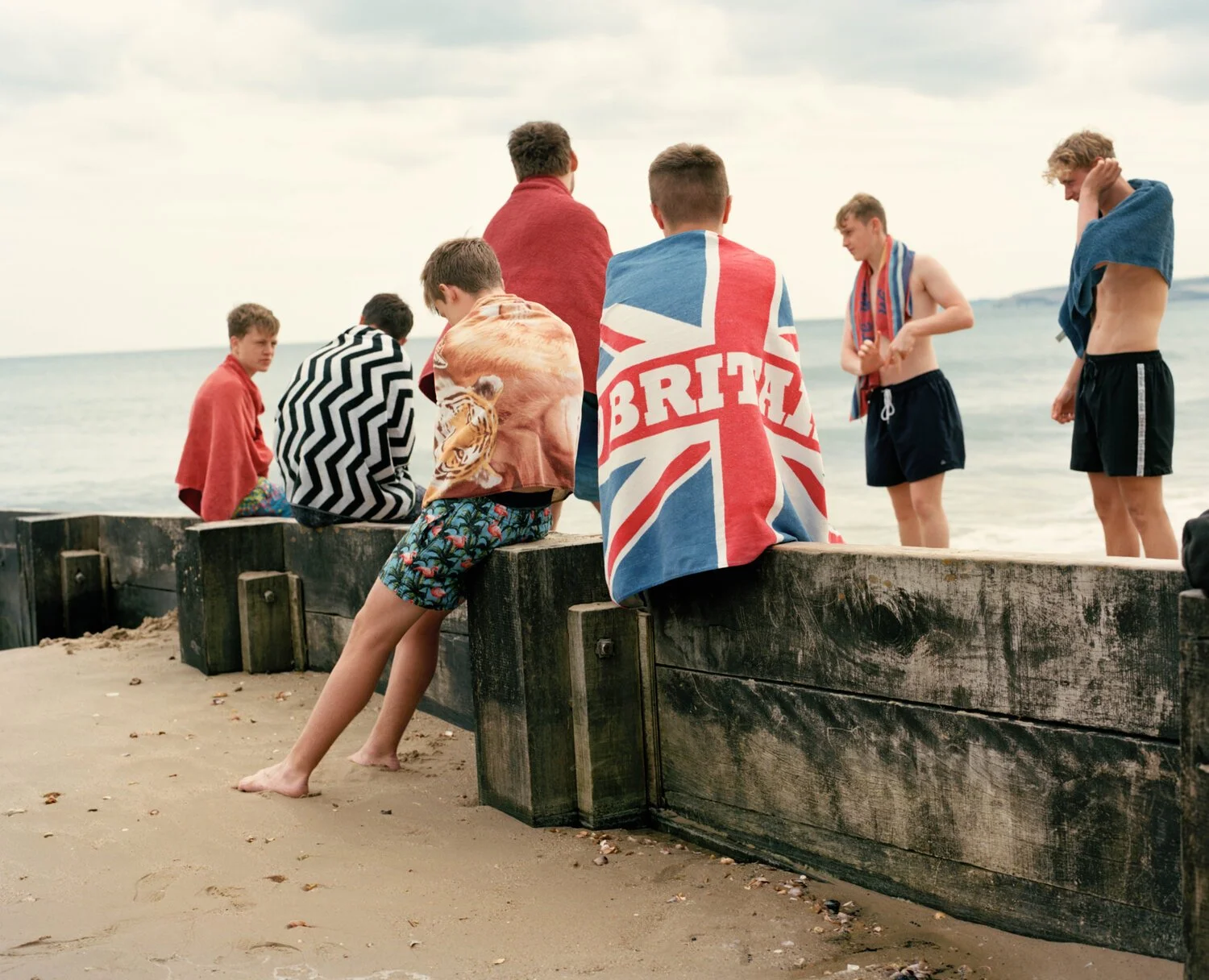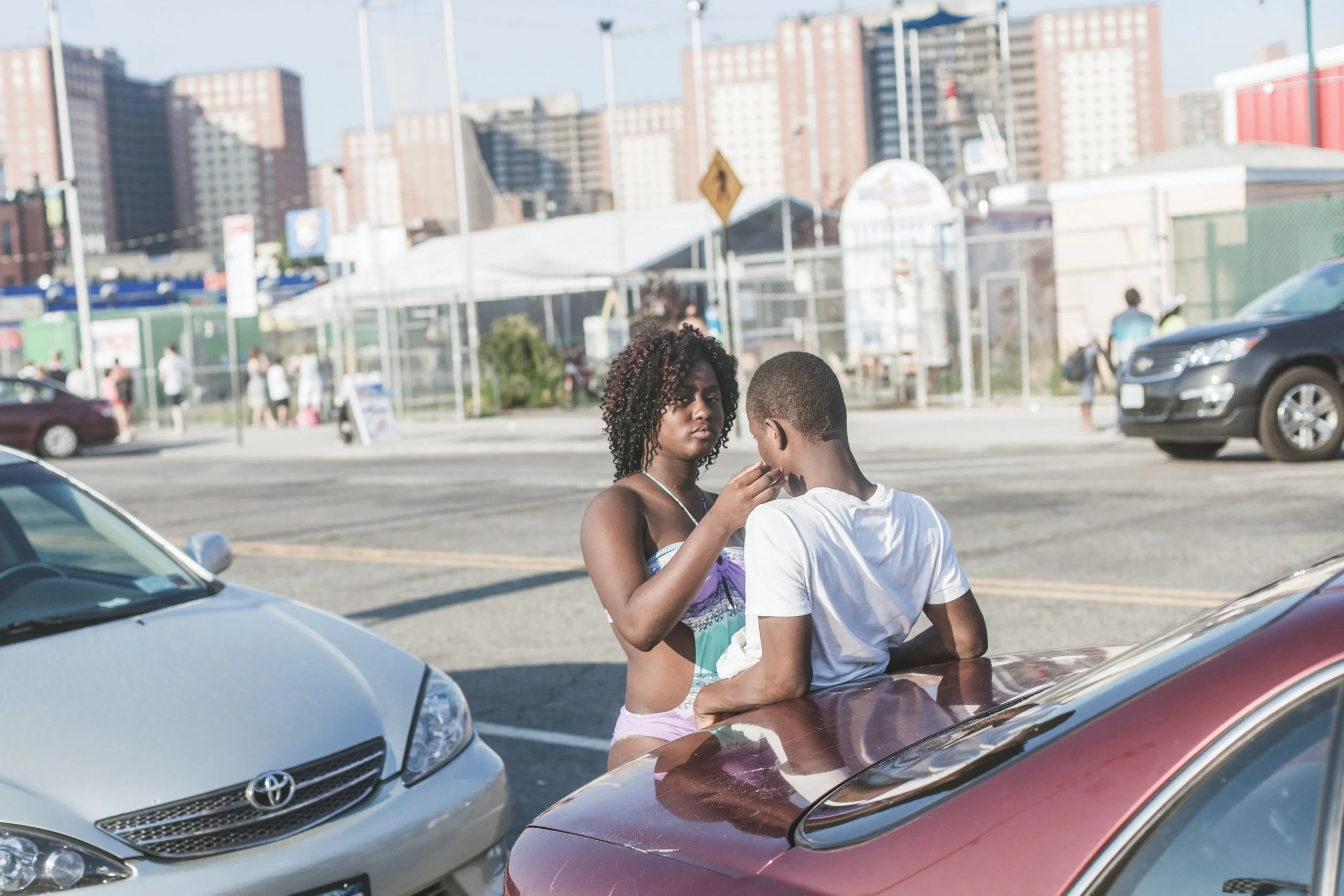How to Commission a Photographer / Part 8: Are you Covered? Insurance
Part 8: Are you Covered?/Insurance
Following on from last week, which was all about photography contracts and legal obligations we’re staying with the ‘serious’ stuff for one more week and tackling insurance. Nearly at the exciting bit though (not that insurance can’t be exciting!), time for the ‘day of the shoot’ next week so stay tuned!
In this part I’m not so much going to talk about the insurance policies you should have as a client, that’s entirely based on your individual business. What I am going to do is look at the types of insurance that are relevant to photography and shoot production, and therefore cover your shoot. I have always taken out my shoot production and other insurance policies with Williamson Carson & Co Ltd, the UK’s leading insurance brokers for the photographic industry. So I’ve had a lot of input in this part from the very helpful Tom Carson, founder and director of Williamson Carson & Co Ltd, whom I can thoroughly recommend for all things insurance.
Insurance and Liability are essential to every business. Some insurances are legal requirements and some are optional and advised. As you can imagine, inadequate cover on a shoot, even on the advised options, can have a catastrophic effect financially.
For photographers, it’s a legal requirement to have Employers Liability Insurance if you are employing people. Others are not compulsory but are recommended because of the financial protection they provide. There are fundamental differences between insurance and liability policies. Liability provides protection against claims made by other people (or companies) against a photographer, and will cover any payment awarded against the insured, in or out of court. Insurance policies can protect virtually anything including individuals, income, premises, equipment, film, portfolio, car, home or personal possessions, from accident, damage, loss or theft. Claims are not usually dependent on a court decision.
Here are some of the different general insurance covers relevant to professional photography practice.
Employer's Liability Insurance
All employers must, by law, have Employer’s Liability Insurance. The definition of an ‘employee’ in this case is often unclear and this may cause confusion, but it is generally understood to be anyone working under someone’s ‘care custody and control’, whether or not a fee is being paid for the person’s services. This can include:
• Any person(s) employed by the Insured under a contract of services or apprenticeship
• Labour masters and persons supplied by them
• Persons employed by labour-only sub-contractors
• Persons offering their services on a labour-only basis
• Persons engaged in work experience, manpower services or similar schemes
• Self-employed persons, freelance artists and voluntary workers
• Any person(s) supplied to or hired in or borrowed by the Insured
Employer’s Liability protects a photographer from any claim of death, bodily injury or disease to an employee arising during a job. If action is taken by an ‘employee’ who has suffered, say, injury, and the court decides that the photographer was negligent and therefore liable, Employer’s Liability will meet the costs of the action and also the compensation. However, if they don’t have a valid policy they will be liable for all charges, fees and compensation and face prosecution for not having Employer’s Liability.
Public Liability Insurance
Public Liability Insurance is not compulsory. However, policies will protect a photographer from a situation where the photographer’s proven negligence causes loss or damage to property or disease, death or injury to another person.
For example, a photographer is shooting on a beach, and a public member trips over some equipment and injures themselves and decides to seek compensation from the photographer. A court would have to decide whether the accident was caused because of the photographer’s negligence and whether the claim against the photographer is justified.
If the photographer does not have public liability cover, they will have to meet the costs of defending an action and the additional costs of lawyer’s fees. Public Liability means that all costs are handled by the insurance company, no matter what the outcome of the claim.
Public Liability will usually only cover an incident, which would be heard in a European court.
© Imogen Forte
Professional Indemnity Insurance
Professional Indemnity Insurance is considered essential protection for all professional practices in today’s litigious climate. Photographers are at risk, in the same way as other professional practitioners, of claims arising from professional negligence. Incidents of an apparently minor nature could ultimately result in substantial court awards and expensive legal costs.
The cover can be comprehensive and include liability at law for the following:
• Any neglect, error or omission by the photographer, their employees or agent
• Infringement of property or contract rights
• Libel, slander, defamation or violation of copyright law
• Dishonesty of employees or agents
• Fees and expenses which a client would have paid to a photographer if they hadn’t made a mistake
• Additional costs incurred to rectify a mistake
• Compensation for court attendance
• Legal defence costs
Claims can arise from a wide variety of areas, but here are just a few situations which could produce a claim against a photographer:
• The camera is defective so no images are available for the client, resulting in a re-shoot
• The images become lost somehow during the process of them being delivered and there is no backup
• The photographer turns up at the wrong location or at the wrong time
• Libel or slander
It is impossible to estimate how much these claims could cost, but any commercial dispute is likely to be expensive, and substantially more will be involved if solicitors are engaged or if a large job needs to be re-shot.
There are very few exclusions with Professional Indemnity Cover, however a photographer cannot make a claim arising from circumstances that they were aware of when they took out the policy.
Equipment Insurance
Most insurance brokers can provide insurance for loss, theft or damage of a photographer’s equipment, but a firm which specialises in the film, TV and photography business is preferable as it will probably have a better understanding of the business. A complete list of all the insurable items is usually submitted to the insurance agent with accurate information or current replacement values. Where items of equipment are obsolete, the nearest equivalent needs to be found to avoid under-insurance. These figures should be updated annually so that equipment is absolutely covered. Policies can be arranged to protect equipment for studio only, UK only, UK and Europe and Worldwide. Photographers are able to expand the cover if they are shooting outside the area normally covered, and pay an additional premium. If a photographer has to do this more than twice in a year, it is usually cheaper to upgrade the policy at the renewal date to include the additional area(s) on a permanent basis.
Some equipment policies automatically cover theft from the photographer’s car, but individual policies may specify that cover is only during daylight hours or that the car should be fitted with a ‘suitable’ car alarm. However, some policies will exclude theft from a car altogether, and so policies should be considered very carefully to ensure that the provision is suitable. Details should always be checked and nothing should be assumed.
Imogen Forte on set with Modibodi
Portfolio Insurance
I guess this one isn’t directly connected to the actual shoot, however I thought it was worth mentioning as books are very often called in when selecting a photographer. A portfolio will often be out of the photographer’s or agent’s care, custody or control and the personal and commercial value that it holds should be insured for. Most photographers pay an additional premium on their equipment insurance to cover their portfolios against loss, damage or theft. Portfolio insurance doesn’t cover the cost of re-shooting. Consideration should also be given by photographers to insuring reinstatement of data and possibly loss of income in respect of problems related to computer hardware or software.
Re-Shoot Cover
A re-shoot can be insured on either an annual or job-by-job basis.
The main elements of a re-shoot cover are:
• Non-Appearance: the cost to re-shoot following a no-show by the photographer or anyone else essential to the shoot
• Negative/ Digital: the cost to re-shoot following the loss or damage to the images
• Extra Expenses: the cost to re-shoot following the loss of, or damage to essential equipment, props or location
Re-shoot policy can also include hired equipment, props, sets & wardrobes, cash and liabilities
Goods In Trust
Goods In Trust is a voluntary insurance policy, which protects photographers and shoot producers against damage to props they have hired or borrowed. These ‘temporary’ products and props are not covered on Public Liability Policies, Goods In Trust Cover is usually an addition to a photographic policy. Many companies and freelance people in the industry should have Goods In Trust cover, whether they are stylists, home economists, design groups, advertising agencies, or any person/organisation that may be temporarily entrusted with someone else’s property. In the case of a photographer, this is loosely referred to as ‘props, sets and wardrobe’. Goods In Trust does not cover camera and lighting hire equipment. The only exception to this is the insurance of hire studios and locations, which are covered by the photographer’s Public Liability and not Goods In Trust.
Cover is normally for a specific amount between £5,000-£10,000 and you can organise additional cover for items that go over this limit, such as a car or jewellery or an expensive prop specially made by a model-maker.
@ Katrina Lawson Johnston. House of Fraser
It is a common mistake to think that Public Liability cover will provide protection against accidental damage to another person’s property during the course of a job. Anything that is featured in, or is intrinsic to, the final image is considered to be a prop and therefore any damage would in fact have to be claimed for under the a Goods In Trust policy.
Working Abroad
Additional insurance cover needed for overseas shoots:
Employer's Liability
Employer’s Liability Insurance cover is normally on a worldwide basis for employees who are UK citizens; however, if a photographer goes abroad to shoot and employs local residents, they will have to take out local insurance in that particular country, in advance, particularly in the USA. Having said that when we organise shoots for our photographers overseas the majority of the time we work closely with an overseas production company and their insurance should cover this.
@ Nick David. On set in South Africa
Public Liability
Special provisions might need to be made, prior to the job, for work done abroad (especially in the USA) in terms of Public Liability Insurance. This cover is normally worldwide, excluding the USA and Canada, but most insurers will extend cover for these areas if requested. If local cover is preferred, the names of insurance companies that deal with commercial liability can be obtained from embassies and consulates in this country.
@ Chris Bethell / The Duke of Earl
Please note the above is a guide only and you must check your own specific insurance requirements with your insurance broker.
Although the author has made every effort to ensure that the information in this blog post is correct, the contents are provided without warranty as to their accuracy, may be of a general nature and the opinion of the author only. The author or any contributor will not be held responsible for any loss, damage or disruption caused by errors or omissions, whether such errors or omissions result from negligence, accident, or any other cause.
The images used in this article are for illustrative purposes only and do not necessarily correlate with specific facts stated in the text.




